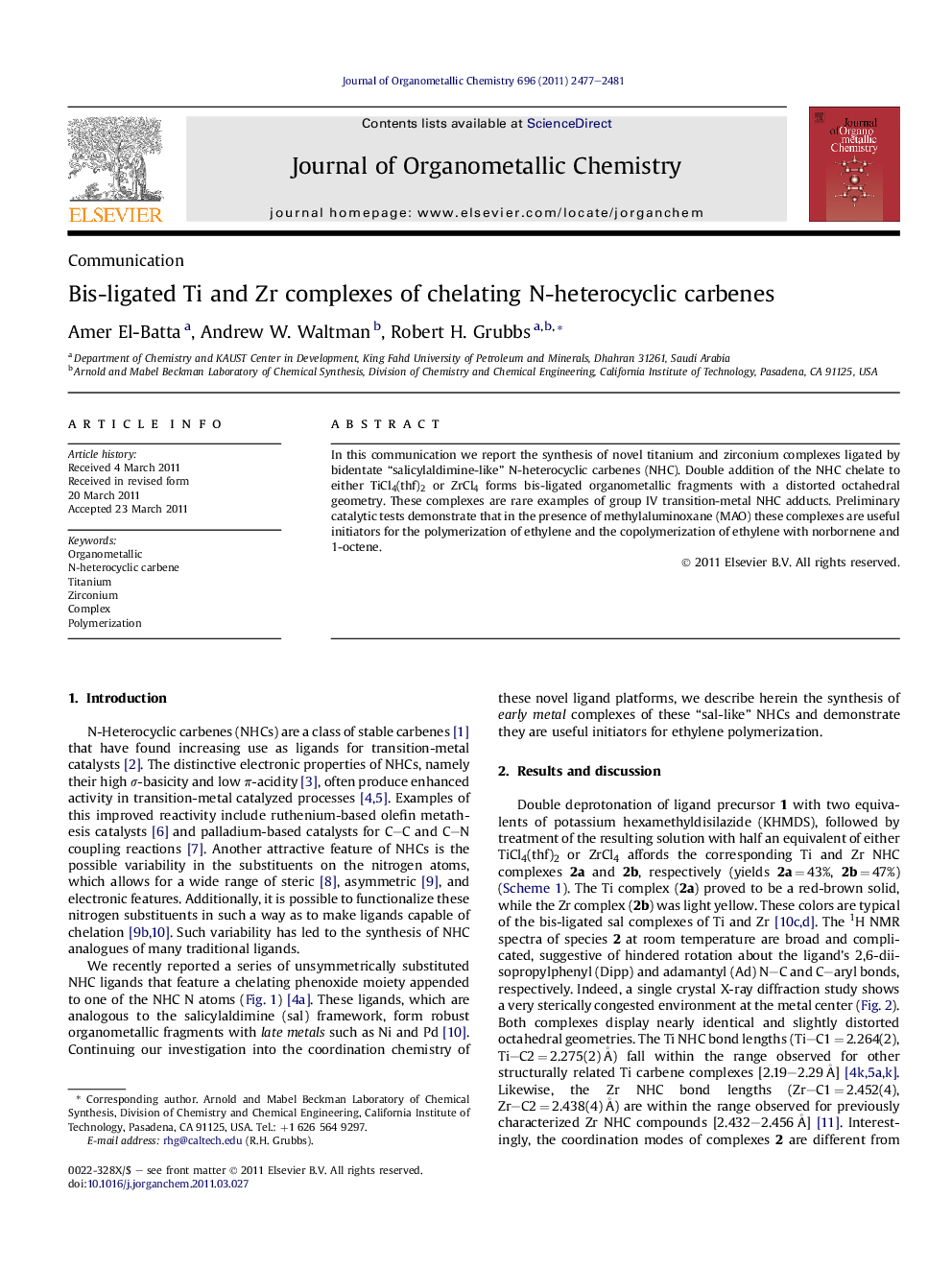| Article ID | Journal | Published Year | Pages | File Type |
|---|---|---|---|---|
| 1325318 | Journal of Organometallic Chemistry | 2011 | 5 Pages |
In this communication we report the synthesis of novel titanium and zirconium complexes ligated by bidentate “salicylaldimine-like” N-heterocyclic carbenes (NHC). Double addition of the NHC chelate to either TiCl4(thf)2 or ZrCl4 forms bis-ligated organometallic fragments with a distorted octahedral geometry. These complexes are rare examples of group IV transition-metal NHC adducts. Preliminary catalytic tests demonstrate that in the presence of methylaluminoxane (MAO) these complexes are useful initiators for the polymerization of ethylene and the copolymerization of ethylene with norbornene and 1-octene.
Graphical abstractIn this communication we report the synthesis of novel titanium and zirconium olefin polymerization catalysts, supported by chelating “salicylaldimine-like” N-heterocyclic carbenes (NHCs). Double deprotonation of NHC ligand precursor with two equivalents of KHMDS, followed by treatment of the resulting solution with half an equivalent of either TiCl4(thf)2 or ZrCl4 affords the corresponding Ti and Zr NHC complexes 2a and 2b, respectively. These complexes are rare examples of group IV transition-metal NHC adducts. As catalysts, they exhibit moderate activity for the polymerization of ethylene and the copolymerization of ethylene with norbornene and 1-octene when activated with MAO in toluene. The activities of these catalysts compare favorably with those observed for bis-ligated sal-like complexes of group IV metals.Figure optionsDownload full-size imageDownload as PowerPoint slideHighlights► Synthesis of Ti and Zr catalysts, supported by chelating NHCs is presented. ► Ti and Zr NHC complexes show moderate activity for ethylene polymerization. ► X-ray crystallography, NMR and HRMS of Ti and Zr NHC complexes have been performed.
